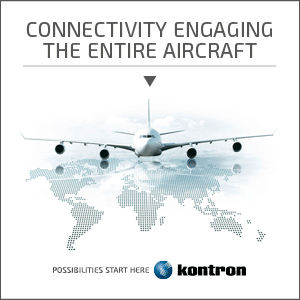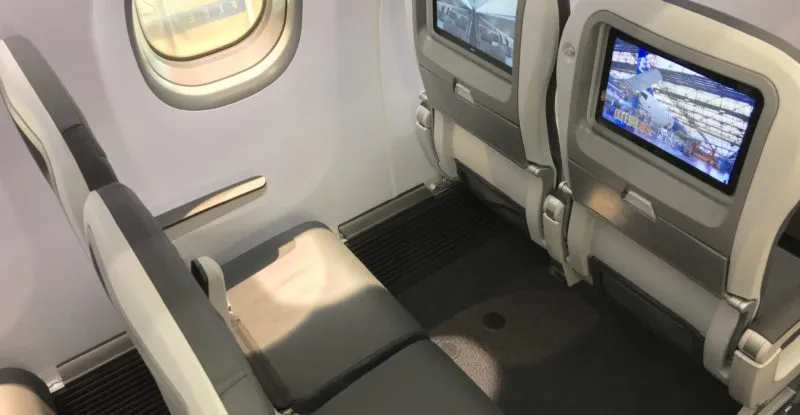Rockwell Collins and Safran are adamant that each other’s planned acquisition of a leading supplier of commercial aircraft seats, interiors and passenger-experience equipment did not influence its own decision in making its respective purchase.
Safran announced on 19 January that it had made an agreed-price bid of €29.96 (US$32.04) per share for all of Zodiac Aerospace’s outstanding shares. When completed, the deal will make Safran the world’s third-largest ‘Tier 1’ supplier (after United Technologies and GE Aviation) to major aerospace OEMs such as Airbus and Boeing, in terms of annual revenues.
Like Safran, Zodiac Aerospace is a France-headquartered company. Safran had originally held takeover discussions with Zodiac Aerospace in 2010 but no deal resulted at that point. But as Zodiac Aerospace struggled in 2015 and 2016 to fulfill its seat- and interior-equipment supply obligations to Airbus for the A350 XWB program, causing Airbus to delay deliveries of many A350-900s to airlines, its share price fell 22 percent throughout the period. Zodiac then accepted Safran’s bid, which priced its shares about 26 percent higher than their market close on 18 January.
Less than three months before Safran made its bid for Zodiac, on 24 October 2016, Rockwell Collins had successfully bid $6.4 billion in cash plus shares for B/E Aerospace. The deal also included Rockwell Collins assuming $1.9 billion of B/E Aerospace debt.
Responding to questions during Rockwell Collins’ 2017 first-quarter earnings conference call late last week, CEO Kelly Ortberg reminded analysts that the industry had known for many years about Safran’s interest in acquiring Zodiac Aerospace before Rockwell Collins bid successfully for B/E Aerospace.
“Our baseline assumption [in deciding to bid for B/E] was that Zodiac’s performance would recover and we have to expect that and we’re going to plan for that,” Ortberg said. But “if you’re talking relative to the announcement yesterday, you know that’s something that’s been rumored for quite some time, long before our B/E move. So it’s certainly something we contemplated as we went through that [decision process].”
Despite knowing about Safran’s continuing interest in buying Zodiac Aerospace, Rockwell Collins decided to move for B/E Aerospace, because it saw B/E’s business as being complementary to its own and was unmoved by the prospect of Safran potentially becoming a major competitor through acquiring Zodiac.
“Look, we really don’t complete much with Safran in our core markets today, so, you know, I don’t really see that combination having any dramatic impact on our plans,” Ortberg said. “Obviously they’re going to be a bigger, larger company and that will create some both positive and negative dynamics, but we deal with that every day in our core markets. So I think [it’s] full speed ahead for us – this isn’t something that derails our strategy. It’s certainly something we thought about before we made the B/E decision.”
Similarly, Safran confirmed to Runway Girl Network that Rockwell Collins’ successful bid last October for B/E Aerospace didn’t influence its decision to bid for Zodiac Aerospace. In an e-mailed statement in response to RGN’s e-mailed question, Safran said:
Safran’s decision regarding Zodiac is a strategic move to reinforce its core aerospace business and enlarge its footprint by creating together the European leader and the #2 worldwide leader in aircraft equipment. The previous discussions with Zodiac in 2010 had convinced us of the strategic rationale which supports a combination with Zodiac. Now was the perfect moment: after having refocused Safran on its core sectors, Aerospace and Defense, this was the next logical step for the Group, allowing it to extend its presence throughout the aerospace equipment value chain.
Then, to answer your question, even though Rockwell Collins’ planned acquisition of B/E Aerospace is part of the market environment, Safran’s decision is not a response to, or influenced by it.
Ortberg told analysts that Rockwell Collins expects to be able to convene a special meeting of its own and B/E Aerospace’s shareholders in early March, for a formal vote to approve the B/E acquisition. Rockwell Collins has obtained the US regulatory permission it needs for its B/E Aerospace acquisition, but still requires regulatory permissions from the European Union, China, South Korea, Turkey and The Philippines. However, “We believe we will obtain them in time for a spring closing,” he said.
Rockwell Collins remains “confident in the projected $160 million run-rate synergies” its own and B/E’s management have already identified from cost-savings that merging the two companies will produce. Now they are performing “further detailed planning on cost and revenue synergies”, said Ortberg.
This planning is studying “Phase 2 synergies incremental to the baseline plan,” which would result from elimination of “potential redundancy and overlaps in the businesses”, according to Ortberg. “We’re now beginning to work through the details to quantify those. They’re all related to where we have overlap, either in capability, manufacturing sites where we are doing duplicate things, customer support sites where we have multiple facilities.”
 In the 20 January analyst call, Ortberg also discussed Rockwell Collins’ motivation for purchasing UK-based Pulse.Aero Limited for $11 million on 4 January. Pulse.Aero is, according to Rockwell Collins’ news release announcing the acquisition, a company “specializing in self-service bag drop solutions and airline applications” and Rockwell Collins bought Pulse.Aero “to enhance the company’s passenger processing services for airports and airlines”.
In the 20 January analyst call, Ortberg also discussed Rockwell Collins’ motivation for purchasing UK-based Pulse.Aero Limited for $11 million on 4 January. Pulse.Aero is, according to Rockwell Collins’ news release announcing the acquisition, a company “specializing in self-service bag drop solutions and airline applications” and Rockwell Collins bought Pulse.Aero “to enhance the company’s passenger processing services for airports and airlines”.
“If you look at our overall airport business, it’s all around providing improved flow through the airport, from walking in to boarding the aircraft – self-service kiosks, all the ticketing,” said Ortberg. “Self-service is a big focus in our business today, and the self-serve bag drop is going to be a big driver there over the next five years. If you haven’t used it yet, you will be using it and you’ll see that, just like using the self-service ticket kiosk, it really is a much better way to move folks through the airport.
“So we saw this as a key element of driving airport upgrades. It’s a part of our portfolio for us to do that. We felt we wanted to have that because [Pulse.Aero] have got some differentiating technology that we think will improve our key wins on these airport upgrade opportunities going forward,” said Ortberg.
“That is our vision – to be able to use information, connectivity, getting through passport control, getting through ticketing and baggage handling,” declared Ortberg. “And it’s all around managing that and that goes all the way to the aircraft. You know, there will be a day where you’ll be able to track your bag, from the seat in the aircraft, throughout the mission of the flight.”








